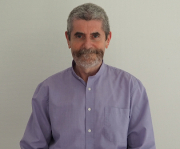 About the Book
About the Book
1899, Glasgow. A man is stabbed to death in a tenement courtyard, and Juan Camarón, photographer-cum-sleuth, is enlisted to assist the police investigation. Perhaps his innovative photographic method can bring to light what the eye may have overlooked.
Yet Juan has problems of his own. His late father’s legacy, a monumental photographic record of the architecture of colonial Cuba, is threatened by a charge of plagiarism from a mysterious señora. Meanwhile, Juan’s hoped-for happiness with his fiancée, Jane, might be over before it’s begun, and even more so when a visiting professor is murdered and Jane is witnessed fleeing the scene. Juan is torn between finding the killer and finding Jane, but are they one and the same? The truth may be hidden in the photographs.
Format: Hardcover (325 pages) Publisher: Allison & Busby
Publication date: 18th February 2021 Genre: Historical Fiction, Mystery, Crime
Find The Art of the Assassin on Goodreads
Purchase links
Bookshop.org
Disclosure: If you buy a book via the above link, I may earn a commission from Bookshop.org, whose fees support independent bookshops
Hive | Amazon UK
Links provided for convenience only, not as part of an affiliate programme
My Review
As in The Figure in the Photograph, Juan’s skill as a photographer and his keen eye for detail play an important role in the unfolding of the story. As he notes, the camera sees more than the naked eye since it records everything. “The camera does not distinguish; does not judge, it does not jump to conclusions. Details missed by the brain are preserved by the machine.” Whereas in The Figure in the Photograph Juan’s application of his serial photography technique – the taking of multiple images of the same scene over a long time period – was the key to solving the mystery, this time it’s his careful and systematic analysis of photographs taken at the crime scene that provide the first clues.
Even when not directly engaged in crime solving, I liked the way Juan responds to people, objects and places with the instincts of a photographer. For instance, noticing how the light falls on a surface or how he might compose a portrait so as to soften the lines on a woman’s face. And he reacts with annoyance when shown a photograph of a scene because he feels the person wielding the camera has created an image open to misinterpretation, dismissing it as “a photograph that recorded an event without conveying its unique meaning”.
The book is set in a period of technological development such as the first moving pictures (although Juan doubts whether these will catch on) and the emergence of the science of psychology, innovative theories about the personality and the first use of talking therapies.
Although the book sees Juan and Jane once again working together to investigate a murder and a possible abduction, there are strains apparent in their relationship. Whereas Juan should admire Jane’s independence of spirit, at times he almost seems to resent her willingness to take the lead, displaying a rather disappointing touch of chauvinism. At one point he reflects, “I should have been proud of her investigative acumen, her keen intelligence. Instead, I felt that my position was being undermined.” As it turns out, Jane’s resourcefulness is sorely needed.
At one point, it seems possible that Jane may have a rival for Juan’s affections when a glamorous figure from the world of the theatre makes an entrance into the story. I loved how the author described the atmosphere of a 19th century theatre before a performance: the spell cast by a full auditorium, the smell of tobacco smoke in the air, the patrons in evening dress and the ‘rising, falling hum of human voices’.
With a plot that encompasses murder, abduction, fortuitous escapes from captivity, agents of a foreign power and industrial espionage, the book has many of the ingredients of a John Buchan adventure novel. As regular followers of this blog will know, there’s no higher praise in my eyes! Indeed, the dramatic events at the Theatre Royal towards the end of The Art of the Assassin recalled for me the music hall scene at the conclusion of Alfred Hitchcock’s film adaptation of John Buchan’s The Thirty-Nine Steps.
Like its predecessor, The Art of the Assassin is an absorbing historical crime mystery with plenty of twists and turns, great period detail and many colourful characters. My thanks to Christina at Allison & Busby for my advance review copy. If my review has made you keen to read the first book in the series, The Figure in the Photograph, it’s now available in paperback.
In three words: Engaging, suspenseful, atmospheric
Try something similar: Castle Gay by John Buchan
Follow this blog via Bloglovin
 About the Author
About the Author
Kevin Sullivan was born in Glasgow. His career in journalism has placed him on the frontline of defining historical moments, from documenting events at Tiananmen Square to driving over a landmine while reporting in Sarajevo. His work has taken him to Singapore, Japan and Spain, and his experiences influence his writing. Kevin currently lives in Bosnia. (Photo credit: Publisher author page)

